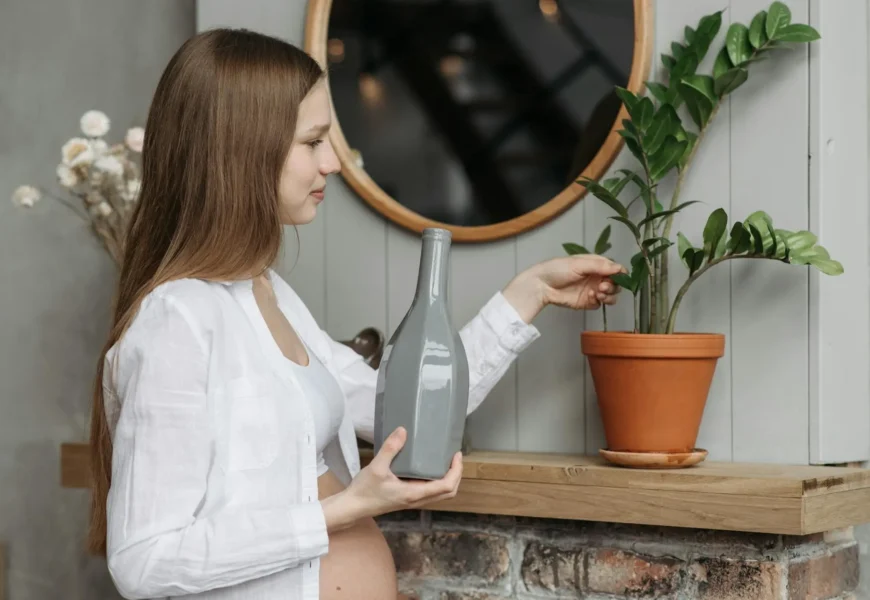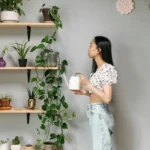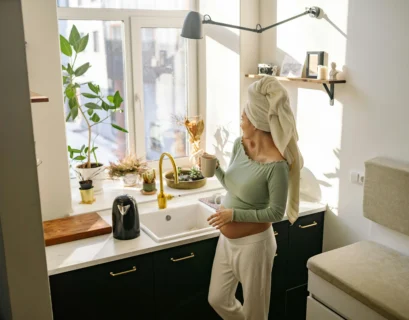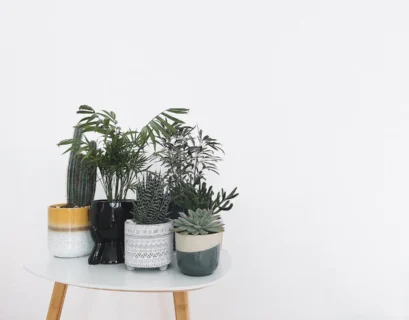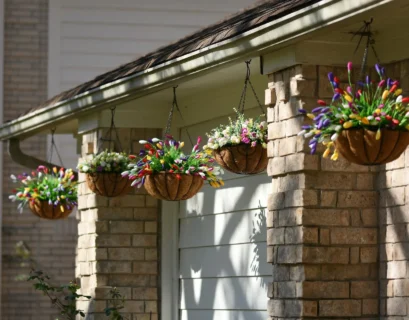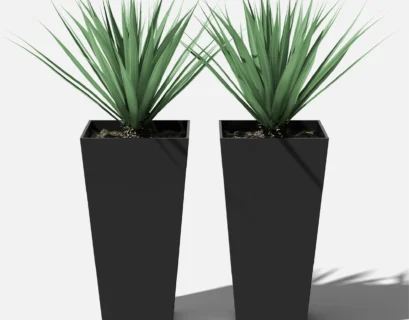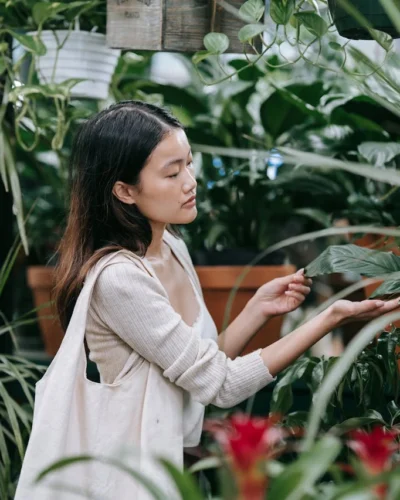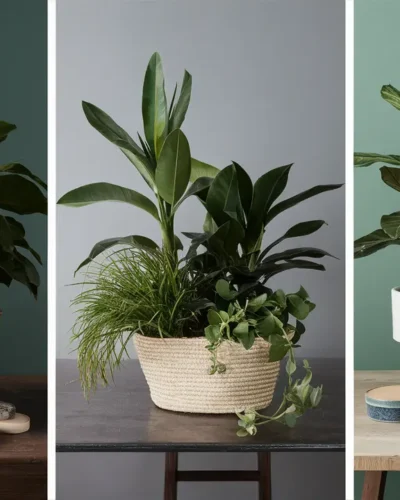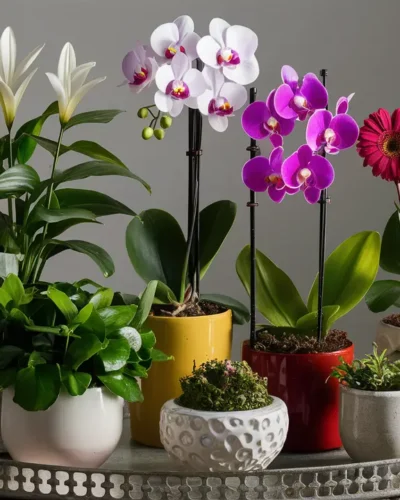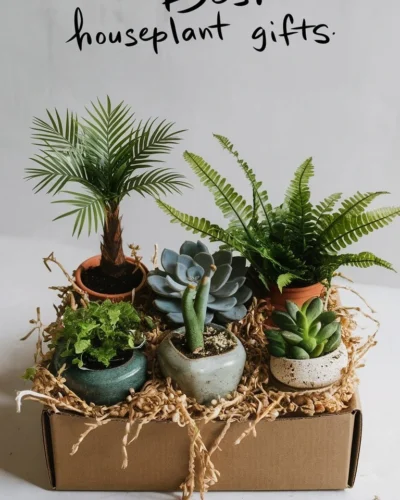In indoor gardening, deciding between self-watering planters and traditional pots can seem like selecting distinct paths.
Each option has its advantages and disadvantages, so determining the most suitable choice for your plants necessitates careful consideration of your lifestyle, plant preferences, and watering routines.
Understanding Self-Watering Planters
Let’s explore self-watering planters that simplify plant care. These containers feature a water reservoir and a separate pot for the plant, ensuring consistent hydration without the need for frequent watering.
Self-watering planters offer the benefit of maintaining a steady moisture level for your plants by enabling roots to access water from a reservoir below.
This helps to avoid the risk of both underwatering and overwatering, which is a frequent issue for indoor gardeners.
Our Ultimate Guide to Self-Watering Planters offers a deep dive into the world of self-watering containers, covering everything from how they work to tips for choosing the right one for your space.
For those with busy schedules or a tendency to forget about their plants (we’ve all been there), self-watering planters can be a lifesaver.
They provide a buffer against neglect, ensuring that your plants stay hydrated even when you can’t be there to water them yourself.
However, it’s essential to note that not all self-watering planters are created equal. Some may require more frequent refilling of the water reservoir, while others may be prone to clogs or other maintenance issues.
Our post on Top 10 Mistakes to Avoid with Self-Watering Planters can help you steer clear of common pitfalls and make the most of these convenient containers.
The Appeal of Traditional Pots
On the flip side, traditional pots offer a timeless simplicity that appeals to many indoor gardeners. Made from materials like clay, ceramic, or plastic, these containers have been a staple of plant cultivation for centuries.
One of the primary advantages of traditional pots is their breathability. Unlike self-watering planters, which often feature sealed reservoirs, traditional pots allow air to circulate freely around the roots, promoting healthy growth and preventing the risk of root rot.
Moreover, traditional pots come in a wide range of sizes, shapes, and styles, allowing you to express your personal aesthetic preferences while complementing your home decor.
Whether you prefer sleek and modern designs or rustic terracotta charm, there’s a traditional pot out there to suit every taste.
While traditional pots don’t offer the same automated watering capabilities as their self-watering counterparts, they provide a hands-on gardening experience that some enthusiasts find deeply rewarding.
There’s a certain satisfaction that comes from tending to your plants, watering them by hand, and watching them thrive under your care.
Our post on Houseplant Parenthood Made Easy: 10 Tips for Beginners to Thrive offers valuable insights for new plant parents, including tips on watering frequency and techniques for keeping your leafy companions happy and healthy.
Making the Right Choice for You
In the end, the decision between self-watering planters and traditional pots boils down to your individual preferences, lifestyle, and gardening goals.
Both options have their strengths and weaknesses, and the best choice for you will depend on factors such as your level of experience, available time for plant care, and the specific needs of your greenery.
In the next part of this article, we’ll delve deeper into the pros and cons of each option, helping you weigh the factors that matter most to you.
Whether you’re a busy urbanite looking for low-maintenance solutions or a devoted plant enthusiast seeking hands-on involvement in your garden, we’ll help you navigate the world of indoor gardening with confidence and clarity. Stay tuned!
A Closer Look: Pros and Cons of Self-Watering Planters vs. Traditional Pots
Self-Watering Planters: Eco-Friendly or Not?
One of the key considerations when choosing between self-watering planters and traditional pots is their environmental impact. While self-watering planters offer convenience and water-saving benefits, some may question their eco-friendliness.
In our post on Self-Watering Planters: Eco-Friendly or Not?, we explore this topic in depth, examining factors such as materials, manufacturing processes, and long-term sustainability.
While self-watering planters can help conserve water by reducing runoff and minimizing evaporation, their production often involves the use of plastics or other non-biodegradable materials.
On the other hand, traditional pots made from natural materials like clay or terracotta may have a lower environmental footprint, but they may require more frequent watering and maintenance.
Balancing the environmental pros and cons of each option is essential for conscientious indoor gardeners who want to minimize their ecological impact.
The Science Behind Self-Watering Planters
For those curious about the inner workings of self-watering planters, our post on The Science Behind Self-Watering Planters provides a fascinating exploration of the principles behind these innovative containers.
From capillary action to osmosis, understanding the science behind self-watering planters can deepen your appreciation for their efficiency and effectiveness.
By harnessing the power of physics and biology, self-watering planters offer a sophisticated solution to the age-old challenge of watering indoor plants.
By mimicking the natural processes that occur in the soil, these planters create an environment that is conducive to healthy root growth and vibrant foliage.
Self-Watering Planters for Different Plant Needs
Not all plants have the same watering requirements, and choosing the right planter is essential for meeting the unique needs of your greenery.
In our post on The Ultimate Guide to Self-Watering Planters: Understanding Plant Needs, Benefits, and Tips, we explore how different types of self-watering containers can cater to the specific moisture preferences of various plant species.
From succulents that thrive in arid conditions to tropical ferns that crave high humidity, there’s a self-watering planter out there to suit every plant’s needs.
By selecting the right container for your leafy companions, you can create an optimal growing environment that promotes health, vigor, and longevity.
DIY Self-Watering Planter Project
For those who love to get their hands dirty and unleash their creativity, our post on DIY Self-Watering Planter Project offers step-by-step instructions for crafting your own self-watering containers from household materials.
Not only is DIY gardening a fun and fulfilling hobby, but it also allows you to customize your planters to suit your space and style.
Whether you’re repurposing old containers or upcycling everyday items, DIY self-watering planters offer a budget-friendly and sustainable alternative to store-bought options.
With a little ingenuity and a touch of green-thumb magic, you can transform ordinary objects into thriving homes for your beloved plants.
Conclusion: Finding Your Perfect Match
In the end, whether you opt for self-watering planters or traditional pots, the most important thing is to choose a container that aligns with your gardening philosophy, lifestyle, and plant care needs.
By weighing the pros and cons of each option and considering factors such as environmental impact, ease of maintenance, and plant compatibility, you can make an informed decision that sets both you and your greenery up for success.
At SproutFolk, we’re passionate about helping you choose and nurture happy houseplants and blooming beauties.
From beginner-friendly tips to in-depth guides on plant care, we’re here to support you on your indoor gardening journey. Happy planting!

